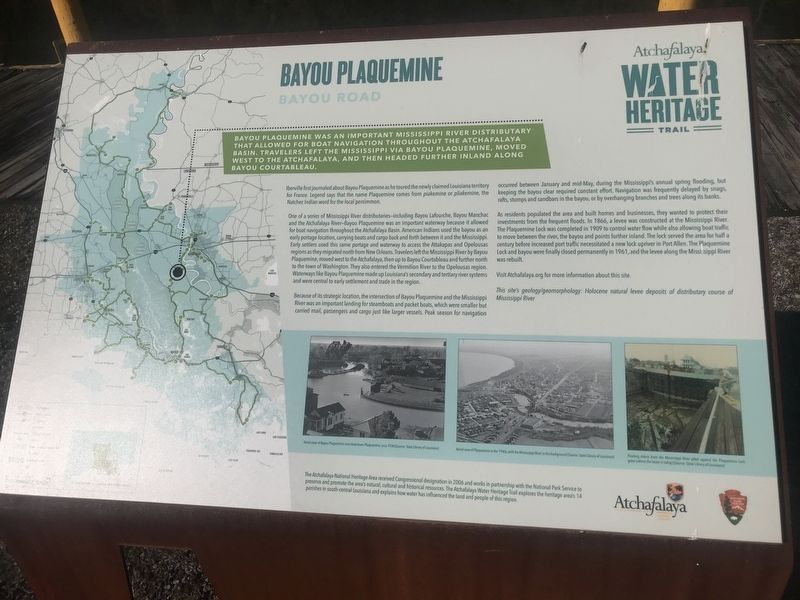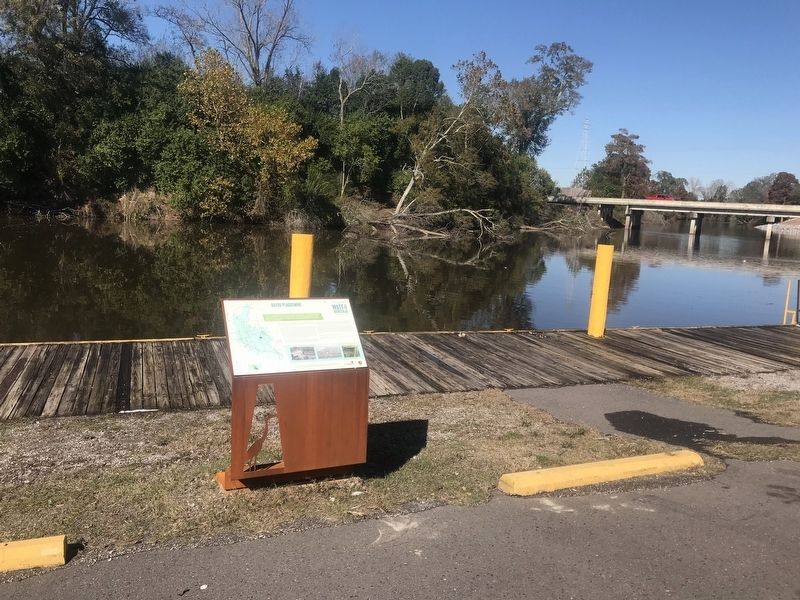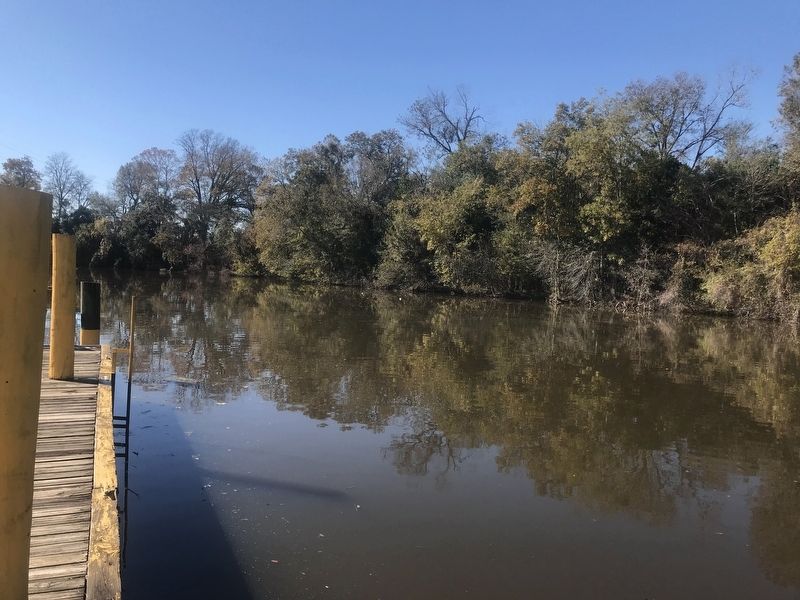Bayou Plaquemine
Bayou Road
— Atchafalaya Water Heritage Trail —
Bayou Plaquemine was an important Mississippi River distributary that allowed for boat navigation throughout the Atchafalaya Basin. Travelers left the Mississippi via Bayou Plaquemine, moved west to the Atchafalaya, and then headed further inland along Bayou Courtableau.
Iberville first journaled about Bayou Plaquemine as he toured the newly claimed Louisiana territory for France. Legend says that the name Plaquemine comes from piakemine or pliakemine, the Natchez Indian word for the local persimmon.
One of a series of Mississippi River distributaries—including Bayou Lafourche, Bayou Manchac and the Atchafalaya River—Bayou Plaquemine was an important waterway because it allowed for boat navigation throughout the Atchafalaya Basin. American Indians used the bayou as an early portage location, carrying boats and cargo back and forth between it and the Mississippi. Early settlers used this same portage and waterway to access the Attakapas and Opelousas regions as they migrated north from New Orleans. Travelers left the Mississippi River by Bayou Plaquemine, moved west to the Atchafalaya, then up to Bayou Courtableau and further north to the town of Washington. They also entered the Vermilion River to the Opelousas region. Waterways like Bayou Plaquemine made up Louisiana’s secondary and tertiary river systems
and were central to early settlement and trade in the region.Because of its strategic location, the intersection of Bayou Plaquemine and the Mississippi River was an important landing for steamboats and packet boats, which were smaller but carried mail, passengers and cargo just like larger vessels. Peak season for navigation occurred between January and mid-May, during the Mississippi’s annual spring flooding, but keeping the bayou clear required constant effort. Navigation was frequently delayed by snags, rafts, stumps and sandbars in the bayou, or by overhanging branches and trees along its banks.
As residents populated the area and built homes and businesses, they wanted to protect their investments from the frequent floods. In 1866, a levee was constructed at the Mississippi River. The Plaquemine Lock was completed in 1909 to control water flow while also allowing boat traffic to move between the river, the bayou and points further inland. The lock served the area for half a century before increased port traffic necessitated a new lock upriver in Port Allen. The Plaquemine Lock and bayou were finally closed permanently in 1961, and the levee along the Mississippi River was rebuilt.
Visit Atchafalaya.org for more information about this site.
This site’s geology/geomorphology: Holocene natural levee deposits of distributary course of Mississippi River.
Erected by State of Louisiana and National Park Service.
Topics and series. This historical marker is listed in these topic lists: Environment • Waterways & Vessels. In addition, it is included in the Atchafalaya Water Heritage Trail series list.
Location. 30° 16.296′ N, 91° 15.593′ W. Marker is in Plaquemine, Louisiana, in Iberville Parish. Marker is on Bayou Road (State Road 3066) south of Enterprise Boulevard, on the right when traveling south. Touch for map. Marker is in this post office area: Plaquemine LA 70764, United States of America. Touch for directions.
Other nearby markers. At least 8 other markers are within 3 miles of this marker, measured as the crow flies. Plaquemine Tribe World War 1 Memorial Tablet (approx. 1.8 miles away); a different marker also named Bayou Plaquemine (approx. 2 miles away); Plaquemine First United Methodist Church (approx. 2 miles away); Academy of Saint Basil (approx. 2 miles away); Old City Hall (approx. 2.1 miles away); a different marker also named Bayou Plaquemine (approx. 2.1 miles away); Gary J. Hebert Memorial Lockhouse (approx. 2.1 miles away); Joseph Erwin (approx. 2.6 miles away). Touch for a list and map of all markers in Plaquemine.
Also see . . . Plaquemine History. (Submitted on January 3, 2019, by Kenneth Ramagost of Unknown, Louisiana.)
Credits. This page was last revised on May 28, 2023. It was originally submitted on December 13, 2017, by Cajun Scrambler of Assumption, Louisiana. This page has been viewed 374 times since then and 20 times this year. Photos: 1, 2, 3. submitted on December 13, 2017.


